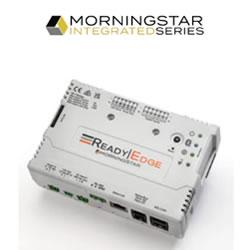Semprius Sets World Record for Solar Module Efficiency
33.9 Percent Efficiency Confirmed by the Instituto de Energía Solar of the Universidad Politécnica de Madrid
DURHAM, N.C.--Semprius, Inc., an innovator in high concentration photovoltaic (HCPV) solar modules, has set a new world record for photovoltaic module efficiency, reaching 33.9 percent (active area). The module was tested indoors at Standard Test Conditions (850 W/m2, 25°C cell temperature, and a spectrum matched to AM1.5D) by the Instituto de Energía Solar at the Universidad Politécnica de Madrid (IES-UPM). This efficiency result, certified by the IES-UPM and corroborated by outdoor measurements made at the Institute of Concentration Photovoltaic Systems (ISFOC) in Puertollano, Spain, significantly exceeds the previous claim of 32.0 percent.
"Semprius as a leader in HCPV modules shows us that we have bet on the right technology"
"This is a significant milestone for Semprius and the entire PV industry," said Scott Burroughs, vice president of Technology at Semprius. "For the first time, we have been able to convert more than one-third of the sun's energy into usable electricity. This demonstrates how concentrated PV can leverage rapidly increasing efficiencies to continue driving down the cost of solar generated electricity."
Semprius delivers a unique HCPV module design that begins with its proprietary micro-transfer printing process. This process enables the company to fabricate the world's smallest solar cell – approximately the size of a pencil point – to create solar modules with unmatched efficiency and performance.
"This is the culmination of our emphasis on bringing smart design to solar," said Joe Carr, chief executive officer of Semprius. "We looked carefully at each component of our module – cell, optics, enclosure and the manufacturing process – to develop a competitive solution that embodies high efficiency, performance and reliability. Important to our customers is the fact that the module chosen for this third-party evaluation is part of the normal production distribution that will be commercially available later this year."
After developing its module with the support of the U.S. Department of Energy's National Renewable Energy Laboratory, Semprius is now ramping up global deployment of demonstration systems while completing construction of a pilot plant in Henderson, North Carolina. Commercial production at the plant will begin during the second half of 2012.
"Semprius as a leader in HCPV modules shows us that we have bet on the right technology," said Martin Pfund, CEO of the Siemens Energy Photovoltaic Business Unit. "The world record is a breakthrough in module efficiency. Combined with our expertise in turnkey solutions business, it has the potential to become a game changer for the solar markets in regions with high irradiation. With Semprius as a partner, we will further broaden our portfolio in the photovoltaics market. We're very pleased to be working together with Semprius to commercialize this technology globally."
To view a social media version of this release, visit here.
About Semprius
Semprius, Inc. is the smart way to generate solar electricity. Based upon the world's smallest solar cells, Semprius designs and manufactures the highest efficiency solar modules in the world. Using patented cell technology and a state-of-the-art manufacturing process, Semprius is leading the way to cost-competitive, sustainable generation of solar electricity. Semprius' headquarters and production facilities are located in North Carolina. For more information, please visit www.semprius.com.
Featured Product

